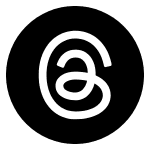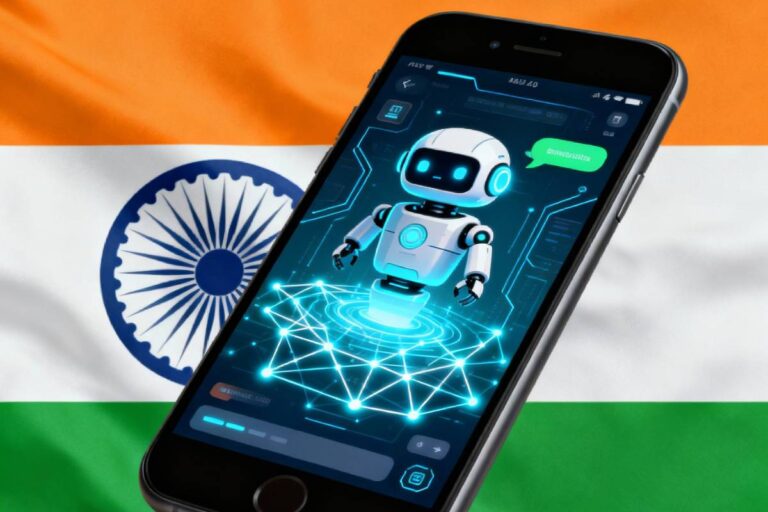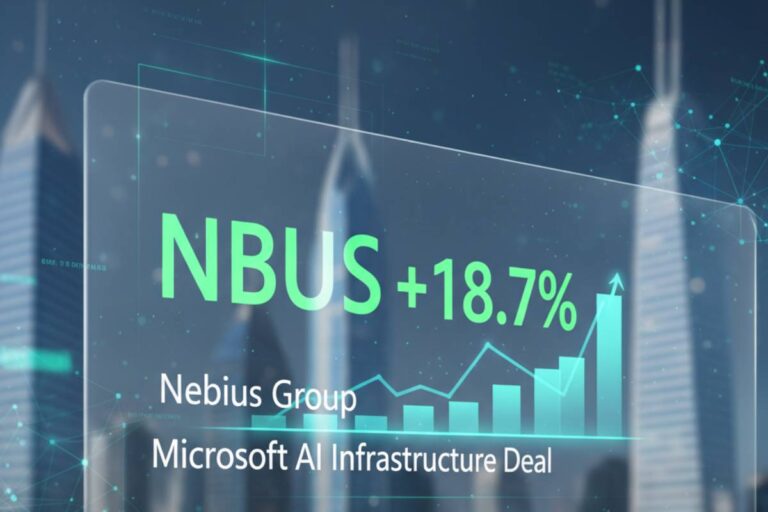The gaming industry is moving quickly toward a tech revolution. This isn’t just another console upgrade or graphics improvement. We’re talking about big changes that will change how we play, think about, and experience games. We won’t just be playing games differently by 2027… We’ll be living in digital worlds that seem real.
This isn’t just a guess anymore. The numbers tell the story: the global video game market will grow from $262 billion in 2023 to $312 billion by 2027. But here’s the most interesting part: it’s not just about having more money or better graphics. We’re seeing the start of gaming ecosystems that are truly smart and learn, change, and grow with every player interaction.
AI-Powered Predictive Analytics: Gaming Becomes Personal
Do you remember when NPCs would walk into walls? Those days are long gone. By 2027, the market for AI in gaming will be an incredible $7.8 billion, which will completely change how games understand and respond to players.
We’re not talking about enemies that are smarter here… That is a part of it, though. This is about games that really know you. AI systems will look at how you play, how you feel, and how you make decisions to make experiences that are very unique to you. Think of a game that can tell you’re having a bad day and make it a little easier. Or one that makes up completely new stories based on your own psychological profile.
Adaptation of Behavior in Real Time
The magic happens right away. AI algorithms will keep an eye on everything:
- How long do you wait before making a decision
- Which characters do you like best?
- Small changes in your gameplay rhythm
This isn’t intrusive data collection; it’s responsive game design that makes experiences just for you.
These systems are already being tried out by big studios. Ubisoft has made AI that makes branching stories on the fly, and Electronic Arts uses machine learning to change the difficulty without players even knowing it. This technology will be standard in all major releases by 2027.
The Cloud Gaming Revolution: Hardware Doesn’t Matter Anymore
Cloud gaming is finally living up to its promises. The infrastructure is in place, the latency problems have been fixed, and 5G networks are making response times of less than 10ms possible in big cities. Buying a gaming PC might feel as old-fashioned as buying DVDs by 2026.
This is what makes everything different: seamless cross-device continuity. You can start a game on your phone during lunch, continue it on your laptop at a coffee shop, and finish it on your TV at home. All of your progress will be saved, and you won’t have to download anything. The walls that separate platforms are coming down completely.
Gaming Ecosystems Based on Subscriptions
Publishers want to be the Netflix of video games. Microsoft’s Game Pass is only the beginning. By 2027, big publishers will have their own streaming services that go directly to consumers. These services will have exclusive content libraries that set them apart from each other.
This change makes high-end gaming more accessible to everyone:
- You won’t need a console that costs $400 or more
- All you need are a few subscriptions that cost a lot less
- The market that can be reached grows a lot
This could replicate the mobile gaming boom of the 2010s.
Extended Reality: VR and AR Have Finally Grown Up
People used to think that virtual and augmented reality technologies were clunky and made them sick. By 2027, the global VR gaming market is expected to be worth $52 billion. This will be thanks to better hardware and a more user-friendly design.
Hardware for the Next Generation of VR
When VR really works, it will be in 2025. We now have:
- Wireless headsets that weigh less than 200 grams
- 4K resolution per eye
- Haptic suits that let you feel what happens in the game
Apple’s Vision Pro has shown what can be done with advanced eye tracking and wide viewing scopes. Inside-out tracking makes setup easier by getting rid of the need for complicated steps.
The physical demands are also changing. Streamers are already getting used to VR’s unique energy needs. Some say they need special nutrition and endurance training for streaming sessions that last more than six hours.
Mixed Reality: Putting Two Worlds Together
Mixed reality combines the real-time environmental integration of AR with the immersive digital worlds of VR. By 2027, we will see:
- Virtual objects that fit in perfectly with real life
- Multiplayer experiences that work on different systems
- New ways to play that combine real-world and digital interactions
Procedural Content Generation: Worlds That Never End
Procedural generation powered by AI is making almost limitless content for games. It’s not just about randomly made dungeons anymore. We’re talking about whole universes with their own ecosystems, cultures, and stories.
No Man’s Sky by Hello Games showed that the idea works on a large scale. This technology will spread to all types of games by 2027, making sure that every playthrough feels completely different. Games will make huge worlds and story elements on the fly, so no two players will have the same experience.
Creating a Story That Changes
What’s the most exciting thing that has happened? AI systems that make up stories just for you in real time. These aren’t pre-written branches; they’re real stories that change based on how you play and what choices you make. Every conversation, plot twist, and character interaction will be one of a kind.
Advanced Display Technologies: Visual Fidelity Reaches New Heights
Gaming displays are becoming real pieces of technology. AI-powered QLED TVs can now:
- Refresh at rates up to 144Hz
- Support Dolby Vision and Atmos
Samsung is adding NVIDIA G-SYNC technology to its OLED models, which almost completely gets rid of lag and screen tearing.
But it’s not only about nice pictures. HDMI bandwidth will go up to 80 Gbps, which will let 4K and maybe even 8K resolutions have higher refresh rates. We’re getting close to the point where visual fidelity is so high that it looks like reality.
Wearable Gaming Technology: Your Body Becomes the Controller
Wearable technology is changing the way we play games:
- Smart glasses
- VR gloves
- Biometric sensors
These make games more interactive and unique than ever before. Games can now change their difficulty or intensity based on your heart rate, stress level, and physical movement in real time.
This isn’t just a gimmick; it’s game design that really gets how people think and work. Think about a horror game that tracks how scared you really are, or a fitness game that changes based on how your heart is doing right now.
Combining Blockchain and NFTs: A Revolution in Digital Ownership
Even though there is a lot of talk about it, blockchain technology is actually useful in gaming. NFTs and smart contracts are changing the way players own and manage in-game items. We can now trade or sell game skins, weapons, and characters on decentralized marketplaces, making them real digital assets.
Games like Illuvium and Big Time are already looking into these options. They are making gaming economies where players can get real-world value from their in-game accomplishments. This won’t be new by 2027; it will be standard practice in all major games.
Cross-Platform Integration: Breaking Down Barriers
The walls that separate gaming platforms are falling down. Players want to have the same experience on all of their devices, as shown by games like:
- Fortnite
- Call of Duty: Warzone
- Rocket League
Platform exclusivity will be rare, not common, by 2027.
Both player demand and the state of the economy are behind this change. Publishers make more money when their games reach as many people as possible. Cloud gaming makes it less important to optimize games for specific platforms.
Next-Generation Console Hardware: Power Meets Efficiency
The next generation of consoles, which is expected to come out around 2027, will have big performance improvements. AMD’s UDNA architecture will:
- Make traditional rendering about 20% faster per compute unit
- Double the speed in ray tracing and AI operations
But it’s not just about power. These systems will be built to be efficient, and handheld companions will use no more than 15 watts to keep the battery life long. The line between home and portable gaming is getting less clear.
Better AI and Ray Tracing Graphics
The GeForce RTX 50 series from NVIDIA has raised the bar for AI-driven graphics and real-time ray tracing. By 2027, all gaming platforms will use these technologies, which will make lighting and reflection effects that are almost impossible to tell apart from real life.
AI-driven graphics enhancement is more than just making things look nice. It’s about making worlds that are more realistic and immersive, and that change in response to what players do and how the environment changes.
Advanced Physics Engines: Digital Twins in Games
Gaming engines are becoming more than just fun. Now, physics-based systems are making digital twins for:
- City planning
- Architecture
- Engineering
- Manufacturing
The digital twin market around the world is expected to grow from $12 billion today to $66 billion by 2028.
This application across industries means that gaming technology development gets funding from many different fields, which speeds up innovation and makes simulations more advanced.
5G and 6G Network Integration
The rollout of 5G networks is making real-time cloud gaming possible, and early research into 6G networks promises even more exciting changes. For most players, the difference between local and cloud-based gaming doesn’t matter anymore because of ultra-low latency connections.
This new way of connecting people allows for new kinds of games that weren’t possible before:
- Huge multiplayer games with hundreds of players at once
- Real-time collaborative world-building
- Augmented reality games that cover whole cities
Emotional AI: Games That Know How You Feel
Advanced neural networks are getting better at figuring out how players are feeling and responding to them. These systems can figure out how a player is feeling by looking at:
- Voice patterns
- Facial expressions (through cameras)
- How they play the game
Then they can change the experience to fit that.
It’s not about manipulation; it’s about making gaming environments that are more caring and responsive so they can help you when you’re upset, excite you when you’re bored, or challenge you when you’re ready.
Generative AI for Making Assets
AI is changing the way games are made. Generative AI can make digital things like:
- Artwork
- Character models
- NPC dialogue
It can also help port games to other languages and cultures more easily, which opens up a lot of new markets.
AI tools that used to only be available to whole art departments will be available to small development teams by 2027. This opening up of game development to more people will lead to more unique and interesting games from indie developers.
Combining Quantum Computing
Quantum computing applications in gaming are starting to show up, even though they are still in the experimental stage. These systems are great at solving hard optimization problems, which makes them perfect for:
- Advanced AI behaviors
- Realistic physics simulations
- Creating procedural content on a scale that has never been seen before
By 2027, hybrid quantum-classical systems could be running the most demanding parts of AAA games, making experiences that can’t be made with regular computers.
Advanced Haptic Feedback Systems
Haptic technology is moving beyond just vibrations. New systems can make games feel real by simulating:
- Texture
- Temperature
- Resistance
When used with VR, this technology makes it feel like you are really touching and moving virtual objects.
The PlayStation VR2 from Sony has better haptic feedback thanks to motion tracking and 4K HDR displays. By 2027, haptic feedback will be so advanced that it can accurately mimic complicated physical interactions.
Brain-Computer Interfaces: The Best Way to Control Things
Brain-computer interfaces are still in the early stages, but they are starting to be used in games. These systems can read neural signals to figure out what someone wants or how they feel, which could make the most intuitive control system ever made.
Current systems are limited and still being tested, but by 2027, we might see early consumer applications that let people control games with their thoughts for easier access or more immersion.
Advanced AI NPCs: Digital Friends
Non-player characters are becoming real friends who are smart. AI-driven NPCs will:
- Remember how you interacted with them in previous gaming sessions
- Develop their own personalities based on your relationship
- Make real emotional connections
These aren’t pre-programmed answers. They’re AI beings that learn and grow from every interaction, building relationships that feel real and personal.
Changing Economic Systems
AI is making game economies that work like real-life money systems. These economies:
- Change prices
- Make things scarce
- React to what players do in real time
This creates more fun and realistic virtual marketplaces.
Blockchain integration makes sure that these transactions are open and fair, and smart contracts automate complicated economic interactions without the need for middlemen.
Playing Augmented Reality Games in Real Life
AR games are no longer just for phones. Advanced AR systems will put digital game parts on top of real-world places, making games that use your whole city as a playing field. Pokémon GO was just the start. By 2027, AR games will be just like real life.
These systems will use advanced computer vision and spatial mapping to make virtual objects that stay in certain real-world places, making mixed reality experiences that are really real.
Creating Games Just for You
AI systems will make brand new games just for you based on:
- What you like
- What you’ve played before
- What do you want to get out of the game?
Instead of picking from a list of games, you’ll tell AI what kind of experience you want, and it will make a game just for you.
This is the most personalized experience possible: not only do players get to customize their experiences within existing games, but they also get to play brand new games made just for them.
Advanced Multiplayer Matchmaking
AI-powered matchmaking systems will do a lot more than just match people based on their skills. These systems will look at:
- How well people get along
- How do they like to talk to each other
- What kinds of games do they like to play
This creates multiplayer experiences that everyone will enjoy.
Using natural language processing and behavioral analysis, it will be easier to find and stop toxic behavior, which will make online gaming communities healthier.
Audio Technologies That Make You Feel Like You’re There
AI-driven sound design and spatial audio are making three-dimensional soundscapes that make the experience much more immersive. These systems can make:
- Realistic soundscapes
- Music that changes in real time based on what you’re doing in the game
When used with high-end headphones and speaker systems, gaming audio will be just as important as visual fidelity in making virtual worlds that feel real.
Being Aware of the Environment in Gaming
Hardware and software for gaming are becoming more environmentally friendly. The industry is moving toward:
- Designs that are efficient
- Use renewable energy
- Don’t add to carbon emissions
This isn’t just about businesses being responsible. It’s also about making gaming ecosystems that can grow without hurting the environment.
The Future is Interactive
Not only are these 25 technologies making games better, they’re also changing what games can be. By 2027, the line between games and real life will be so blurry that we’ll have to come up with new words to describe these experiences.
We’re getting closer to a time when games aren’t just things to do for fun, but instead are smart, permanent worlds that exist alongside our real lives. These digital spaces will be more than just places to play; they will also be places to work, learn, socialize, and make things.
The gaming industry has always been at the cutting edge of new technology, and the next few years will be the most important in its history. People who make games, play games, and love technology can’t wait for 2027.
The revolution isn’t on its way; it’s already here. The only thing left to do is ask if you’re ready to play
















